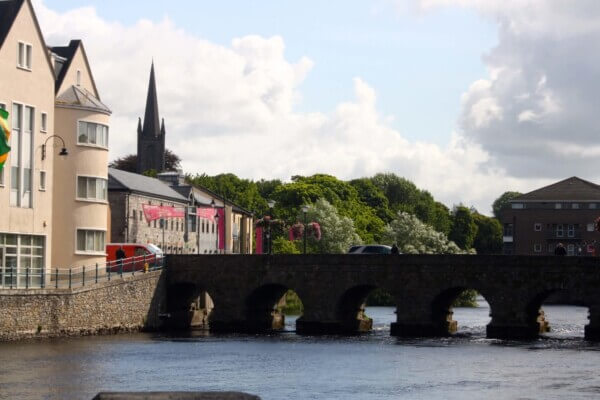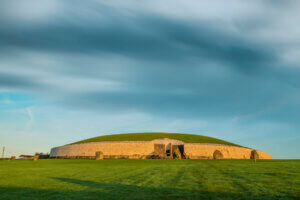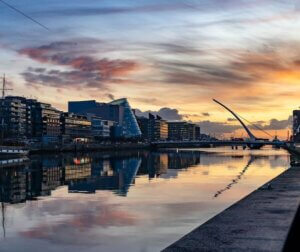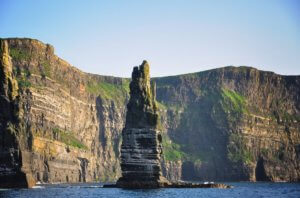You’ve finally decided to visit the Emerald Isle. Congratulations! But did you know that there are at least 5 things you should do before your trip to Ireland?
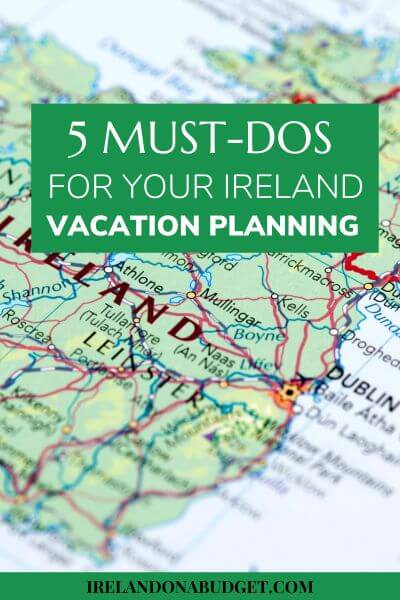 This post and page contain affiliate links and I may earn compensation when you click on the links at no additional cost to you.
This post and page contain affiliate links and I may earn compensation when you click on the links at no additional cost to you.
No doubt it’s been on your bucket list for some time, and having spent months, maybe years researching your family history, you are excited to finally see the land of your ancestors.
But before you set foot on Irish soil, there are some things you must do to ensure that you have the best vacation ever.
Here are the 5 things you should do before your trip to Ireland that will guarantee you have a safe, enjoyable time there.
Keep this list handy as you make your plans.
1. Create an Itinerary
Ireland might be small but there is so much to do. One trip is definitely not enough!
So, in the interest of keeping yourself sane and getting the most out of your time there, I suggest that you create an itinerary.
That means choosing a section of Ireland that you would absolutely love to see and maybe a few areas close to that. You can always go back to see more another time!

Most people who visit Ireland take cues from the big tourism agencies and tour companies that plug the better-known attractions, such as Dublin, the Ring of Kerry, the Blarney Stone, the Cliffs of Moher, and other popular tourist attractions.
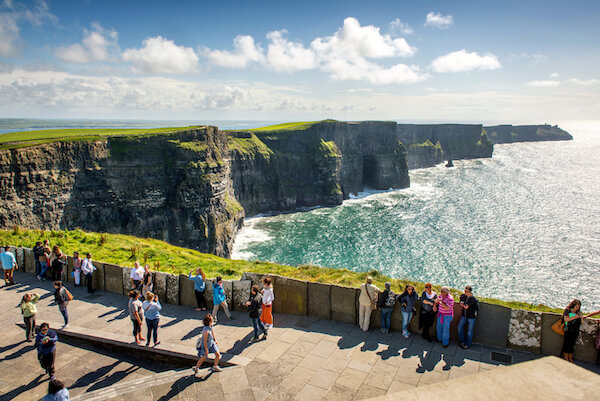
While there’s certainly nothing wrong with that, there are other beautiful places to explore in Ireland that are not overrun with tourists.
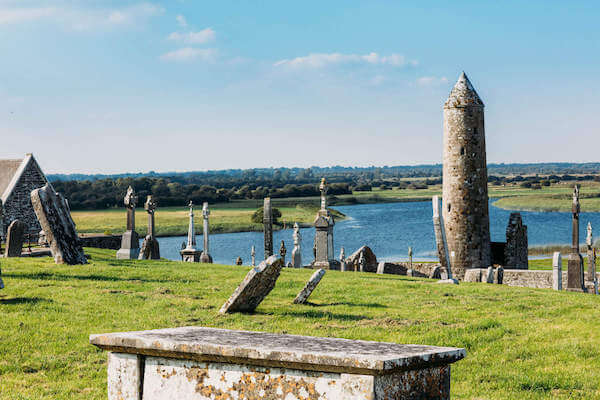
Ideally, you should create an itinerary that includes a specific region in Ireland, be it the Northwest, the West, the East, the Cork and Kerry region, the Midlands, or any other area of the country that interests you.
You could start jotting down some ideas in this handy notebook.
Read More: Best Tools for Planning a Vacation to Ireland
Donegal, for example, has sometimes been referred to as the “forgotten county.”
Ireland’s national rail system does not extend to Donegal and some of its regions are the remotest in Ireland.
However, it is still worth seeing.
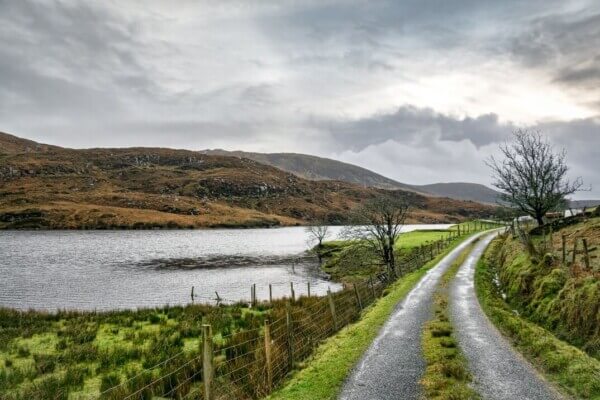
One Co. Donegal attraction not to be missed is The Slieve League Cliffs, which are actually higher than the Cliffs of Moher. The views are absolutely beautiful from the top.
If you’re into hiking, this is a great place to start your Irish travel adventure!
Sligo to its south is most often remembered for its connection to the Irish poet William B. Yeats, but there’s lots more to the county than that.
Did you know that Sligo is a haven for surfers?
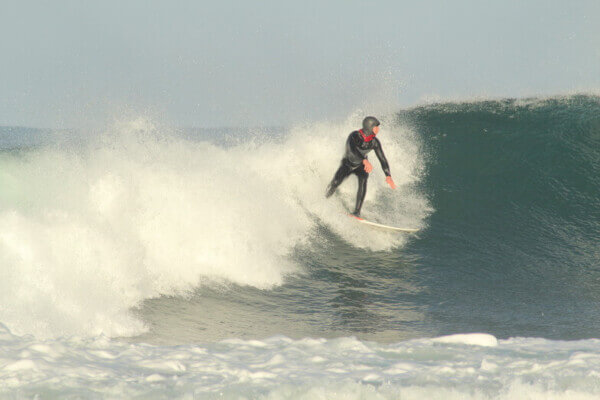
If you like to surf or enjoy watching surfers ride the waves, then a small village in West Sligo called Easkey is where you’ll find all the action.
The place has become synonymous with surfing in the West of Ireland in recent years, along with other favorite spots, including Mullaghmore, Enniscrone, a few miles away, and Strandhill, which is closer to Sligo town.
Check out this drone video, courtesy of Dromore West Drones, of the surfing action in Easkey.
The video highlights the beauty of the region, along with historical sites such as Easkey Castle, which was built in 1207 by the O’Dowd chieftains.
County Mayo is another county that doesn’t always get the recognition it deserves.
Westport is a lively town and has been a tourism hub for many years, but there are other, equally interesting places to visit in Mayo.
The Great Western Greenway, the longest off-road walking and cycling trail in Ireland, used to be the site of the renowned Westport to Achill railway.
It was opened by the Midland Great Western Railway in 1894 but sadly closed in 1937.
While the tracks no longer exist, the walk is a popular spot for tourists and locals alike and includes some of the most beautiful scenery in Ireland.
Bicycles can be rented from a number of companies listed here.
Itineraries to check out in other parts of Ireland include The Burren Loop in Co. Clare, a 160-kilometer (99 miles) around the Burren National Park, the Boyne Valley Scenic Loop, a 190-kilometer (118 miles) that starts in Drogheda, Co. Louth and ends in Meath, and the Causeway Coastal drive from Belfast to Derry, approximately 250 kilometers long (155 miles).
Stay in a B&B in Ireland
2. Create a Packing List
I’ve talked about the importance of bringing the right gear on your trip to Ireland in another blog post on packing for your trip to Ireland.
It’s worth mentioning again that Ireland’s weather can be notoriously changeable, even in the summer months, so it’s wise to pack some rain gear and boots.
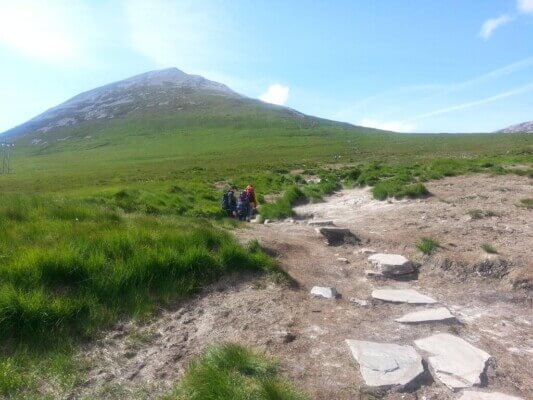
Hiking boots are a good idea if you plan on walking a lot in hilly areas or up mountains. I would recommend Merrell hiking boots for both men and women. My whole family buy this brand and find the shoes soft and breathable.
Otherwise, sneakers are great for day-to-day sightseeing. A light rain jacket is ideal during the summer months.
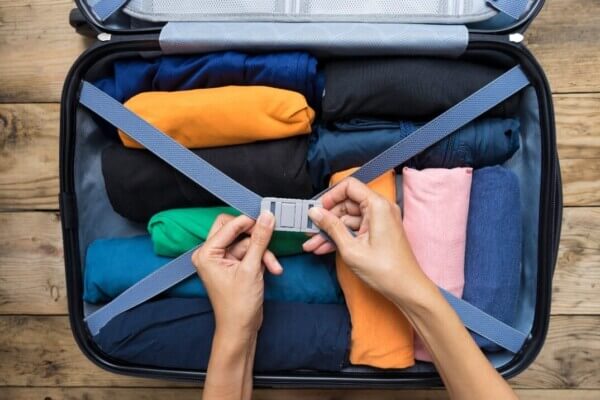
If you’re going in the winter, be sure to bring a warm coat, scarf, and gloves, similar to what you would wear here in the northern climes of the U.S. Snow is generally not a big issue in Ireland, but it is damp during the winter. Layering is also a good idea.
Use the Ireland on a Budget packing list to get you organized before your trip.
By clicking on the Amazon advertisement and additional link below, I may earn a small commission from the Amazon Associates Program. However, you will not incur any additional costs by doing so.
The kind of airline tickets you purchase will determine your choice of luggage. Many of the airlines offer discounted fares, which in turn will restrict you from bringing luggage that is over a specific weight.
This handy guide details the various requirements when it comes to carry-on baggage allowances.
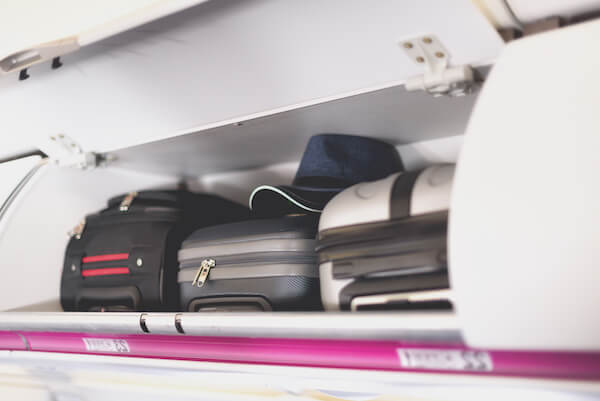
Choose a suitcase that has fully-lined compartments with plenty of pockets. Bags that have space for laptops or tablets are also useful.
Younger travelers often prefer to backpack it, and I can’t blame them.
Traveling with a backpack allows you to be hands-free and most backpacks are good enough that you can wear them for several hours at a time.
3. Research Your Ancestors
In recent years, both the Irish government and the authorities in Northern Ireland have made it much easier to access ancestry records for the millions of Americans and others across the world who claim a connection to Ireland.
Many people can research their family lineage back to at least the mid-19th century without having to pay a fee, thanks to sites like Irish Genealogy, The National Archives of Ireland, Ask About Ireland, the Dublin City Heritage Databases, and the Public Record Office of Northern Ireland.
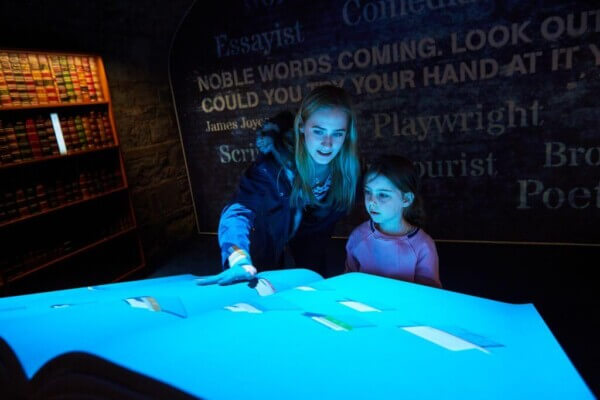
Of course, talking to family members will help with your search, but these sites will undoubtedly speed it up.
The Irish Family History Centre, an affordable membership ancestry group located in Dublin, helped Tom Cruise find his Irish ancestors, as well as contributing to the search of former President Barack Obama, President Joe Biden, and Bruce Springfield.
There is a free subscription model but you will get limited results from it.
Other paying ancestry sites include RootsIreland, Ancestry, and Find My Past.

No matter how much information you have, you can quite likely find out more once you’re on the ground in Ireland. In many cases, locals can fill in some of the blanks, and many Irish natives are more than happy to help Americans discover their heritage.
If your Irish ancestry is important to you, be sure to make this one of the 5 things you should do before your trip to Ireland.
Save $500 on Your Next Adventure by Joining the Dollar Flight Club
4. Apply for a Credit Card With No Foreign Transaction Fees
Many credit card companies charge on average a foreign transaction fee of about 3 percent every time a charge is processed outside the United States.
Most consumers believe there’s nothing they can do about it and so they chalk it up to the disadvantage of purchasing goods in a foreign country.
What many people don’t realize, however, is that you can get a credit card specifically for situations like these.
Before you go to Ireland, be sure to apply for one. If you have a good credit rating, you shouldn’t have a problem.
Chase, American Express, Discover, and Barclays Bank issue credit cards that don’t charge foreign transaction fees. Some, however, come with hefty annual fees.
Here are some of my favorites that have lower annual fees:
-
- The Chase Sapphire Preferred card has an annual fee of $95 that is waived for the first year of usage and comes with some nice additional benefits, including 80,000 points after spending $4,000 on purchases during the first three months of opening the account. You also earn double points on travel and dining purchases and one point per dollar spent elsewhere.
- Citi Premier Card has a $95 annual fee that is waived for the first 12 months.
- Capital One Venture Rewards Credit Card also has a $95 annual fee that is waived during the first year
Read More: Traveling with Debit and Credit Cards
By clicking on the Amazon links below, I may earn a small commission from the Amazon Associates Program. However, you will not incur any additional costs by doing so.
5. Tips on Adapters, GPS, and WiFi Coverage
Adaptors – be prepared for Ireland’s different voltage requirements by bringing the appropriate adapter that will into an Irish electrical outlet. Ireland’s wall outlets deliver 230 volts/50Hz, whereas, in the U.S. and Canada, it is 110v. Plugs and sockets in Ireland have three prongs, so you’ll have to plug your devices into that adaptor first since they simply won’t fit into the Irish sockets.
Most people are just fine with adapters.
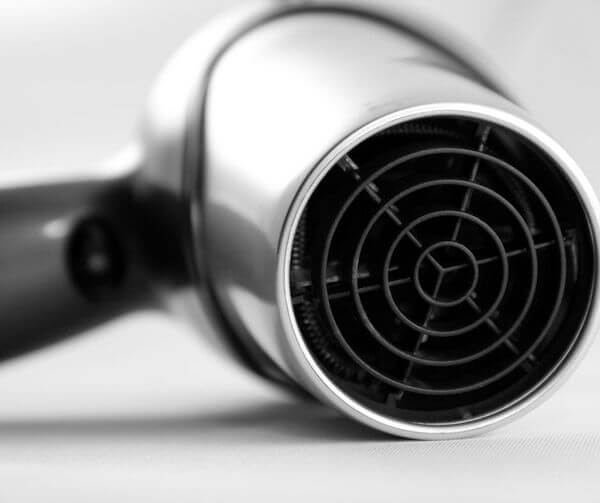
The only time you might need to use a converter in Ireland is if you are bringing outdated electronics like an old hairdryer which would be a single voltage item. Most new electronics are dual- or multi-voltage, meaning that they are able to work with more than one type of electricity and therefore, only require an adapter.
Navigation – some people like to use maps, while others rely on GPS to guide them. If it’s your first time driving in Ireland, I suggest you use some sort of navigation system.
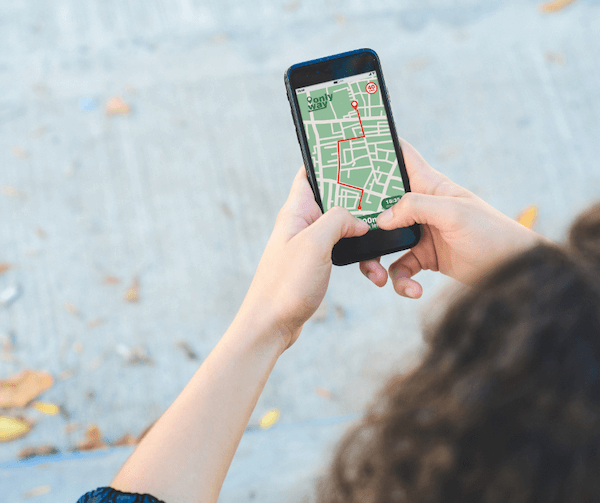
A free GPS tool called Navmii is what my family and I used when in Ireland last year and it worked pretty well. In some of the rural parts of Ireland, it seemed to take us on a rather convoluted route, but we still got to our destination.
If you use Google’s navigation system, it’s a good idea to download the various maps you’ll need beforehand in case you end up in an area where there’s no coverage.
You could also buy a SIM card when you get to Ireland and switch out your regular one. The new SIM will give you an Irish phone number and you can use your phone and you can use it just like you can at home, sometimes getting unlimited data with certain cell phone providers in Ireland. You can only do this with an unlocked phone (i.e. a phone that has been fully paid off).

WiFi Coverage – when I arrive in Ireland, I always turn my cellular data off to avoid roaming fees. I wait until I arrive at my destination to get access to free WiFi or get it for free in the pubs and restaurants I visit while I’m there.
If you want to have access to continuous coverage throughout your vacation, you’ll need to contact your carrier before you go and sign up for an international WiFi plan, which can end up being costly.
Of you could sign up for Wifi Candy, a handy device that will keep you plugged in all across Ireland. The company also offers an eSIM plan. Use code IOB2024 to save 10% off your total bill.
Let me know in the comments section if these tips were helpful as you plan your vacation to Ireland in 2024 and beyond.

